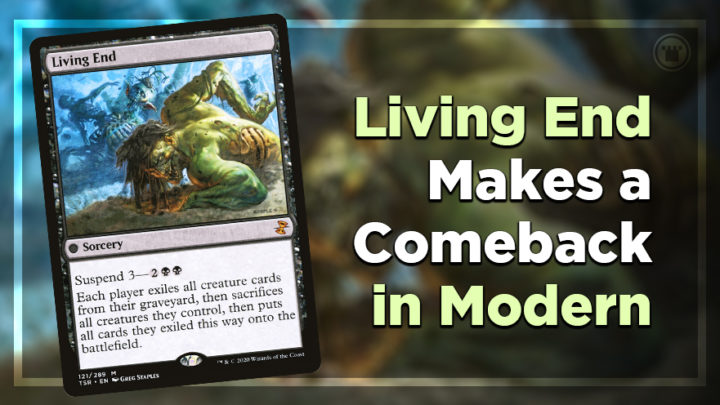Cascade decks have been a pillar of Modern since the release of Modern Horizons 2, but Living End has been around for quite a lot longer. But long gone are the days of Demonic Dread and Monstrous Carabid. Living End went through another evolution once, with the addition of As Foretold and Electrodominance, which removed the cascade cards from the deck in favor of interaction. Now, Shardless Agent has brought Living End back to cascading, and thanks to a higher density of blue cards, Force of Negation is a great option for protecting your combo.
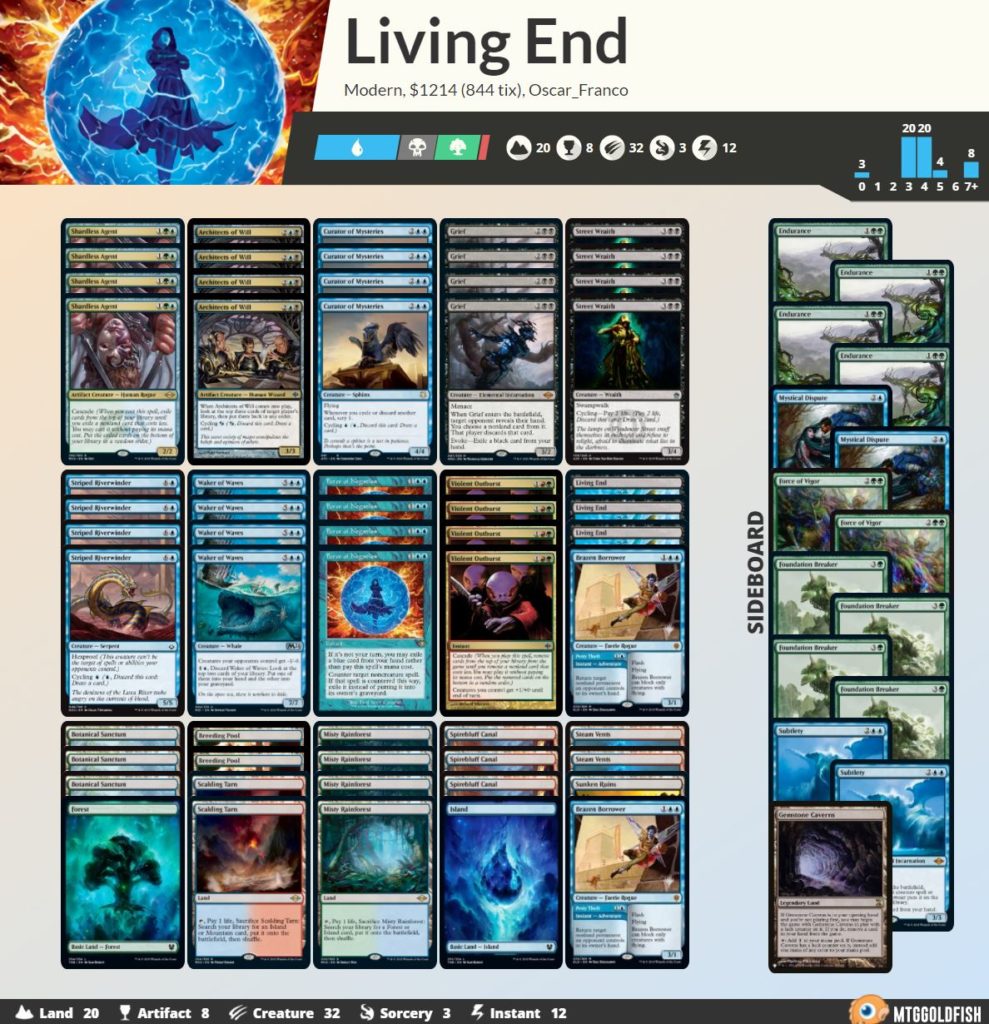
Living End recently won the Magic Online Super Qualifier, which is no surprise, given the performance of cascade decks lately. Modern has been midrange-dominant, with Lurrus, Ragavan, and Dragon’s Rage Channeler running the show. It’s the perfect time for Living End to show up, as it beats up on removal-spell heavy strategies.
Let’s take a closer look at the latest build of the deck.
Deck Construction
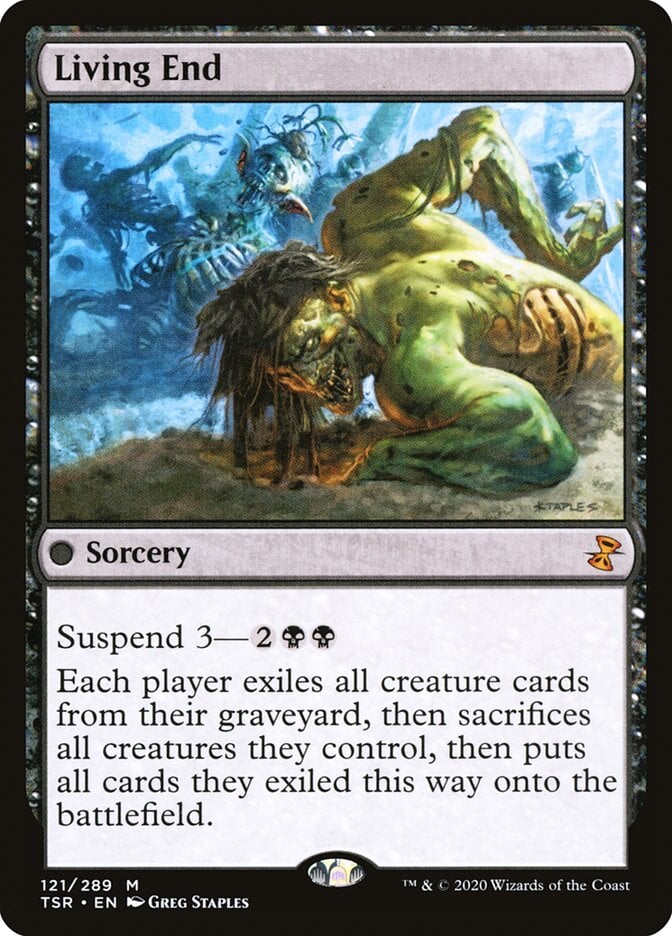
Splinter Twin is the gold standard of Modern A + B combo decks. Living End is kind of like that, except it is more of an A + A + A + A + A + B combo deck. Instead of Deceiver Exarch, Living End has… well, some draft commons. Don’t worry, they’re at least chonky draft commons! The upside here: instead of being vulnerable to creature removal, you’re vulnerable to graveyard interaction, which is much less common in Modern.
Cyclers
Large creatures with cheap cycling costs are instrumental to the success of Living End. The mana value and abilities of the creatures almost never matter. In current Living End decks, the criteria for cyclers is generally:
- Cycles for 0-1 mana
- Has a reasonable-sized body
- Is blue or black
Cyclers are so important because not only do they dig you to one of your cascade spells, but they’ll also finish the game once you find one. Naturally, you want to be able to get as many cyclers into the graveyard as possible before casting Living End to give yourself the best chance to win the game.
Many of the cyclers are just “keyword big” with one-mana cycling costs, so they aren’t worth mentioning here. However, there are some that I would like to touch on.
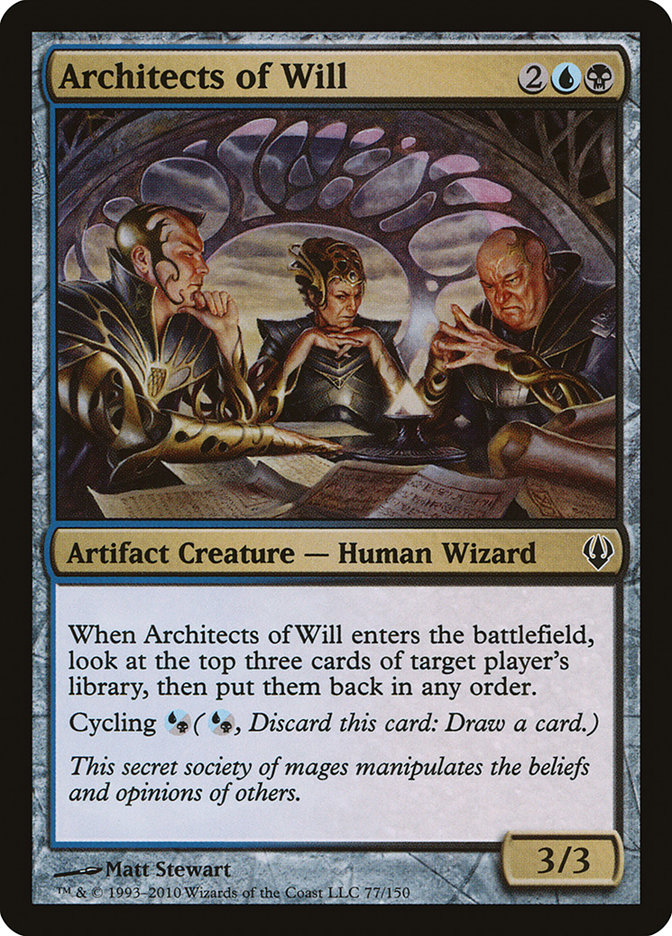
Architects of Will looks a little underpowered, and frankly, if you judge the card on its face, it is. However, being both black and blue is important because it turns on Grief and Force of Negation. Once you cast Living End, you can also rearrange your opponent’s top three cards to make it harder for them to deal with your board.
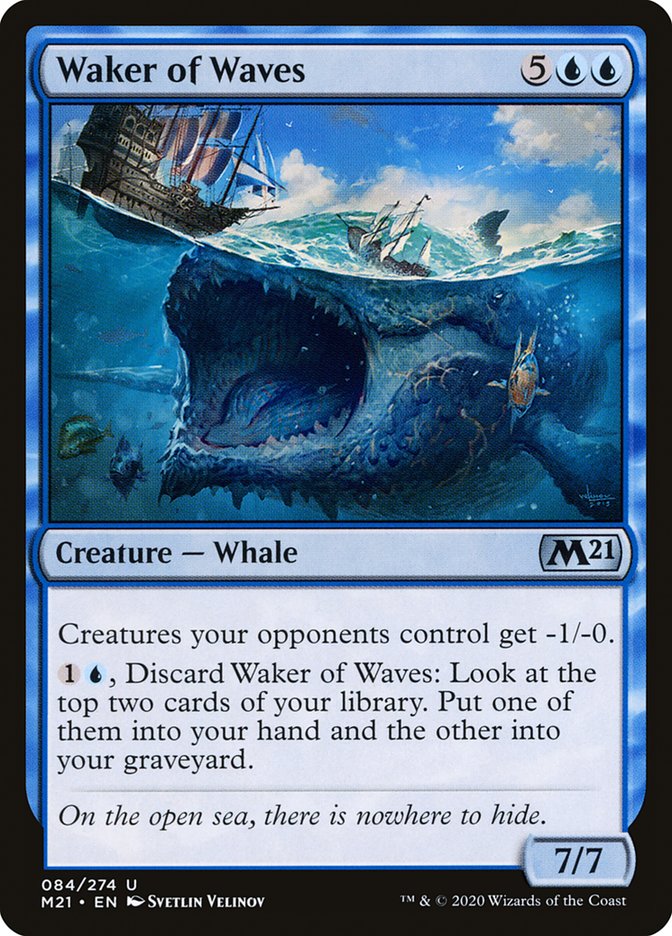
Waker of Waves is the rare two-mana cycler, but you do get more than just a cycle. Looking at the top two cards and putting one in your hand and the other into the graveyard is effectively drawing two cards in Living End. Getting a 7/7 that shrinks the opposing team isn’t too shabby, either.
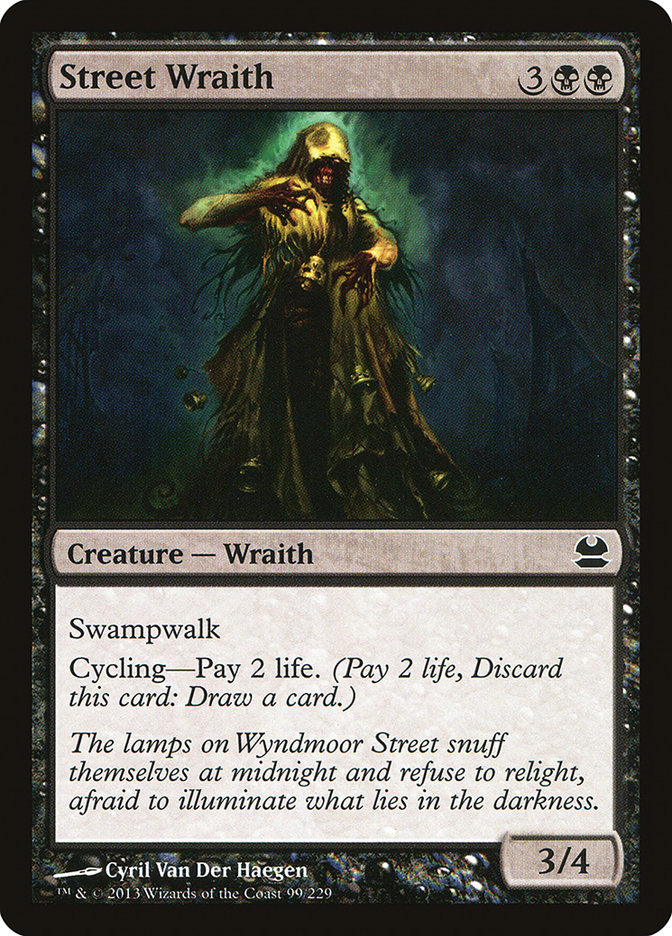
Street Wraith is the best deal around when it comes to cycling. Two life and zero mana isn’t a big deal for a combo deck. Filling your graveyard early in the game and drawing into more cyclers is powerful, as is the ability to dig for a cascade card.
Cascaders
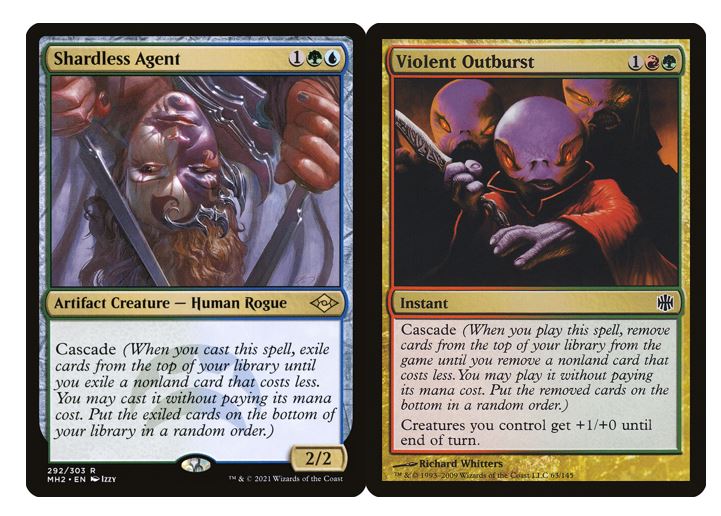
Eight cascade spells is standard for Living End. Violent Outburst and Shardless Agent are almost always the ones you’ll see, but you’ll also see Ardent Plea in versions of the deck that splash white. Shardless Agent is the best sorcery-speed option, both because it’s a creature and because you can pitch it to Force of Negation. Violent Outburst is powerful enough to play despite adding red to the deck; a three-mana, instant-speed Plague Wind (probably) is a great rate, especially with the cascade attached.
Sideboard
Given the nature of how graveyard decks operate, Living End has a strong game one. Once players get sideboards involved, the games get harder; most opponents will have some way to exile your graveyard or deal with Living End. As such, combo decks like Living End will often forgo sideboarding hate cards of their own, preferring to answer opposing hate cards instead.
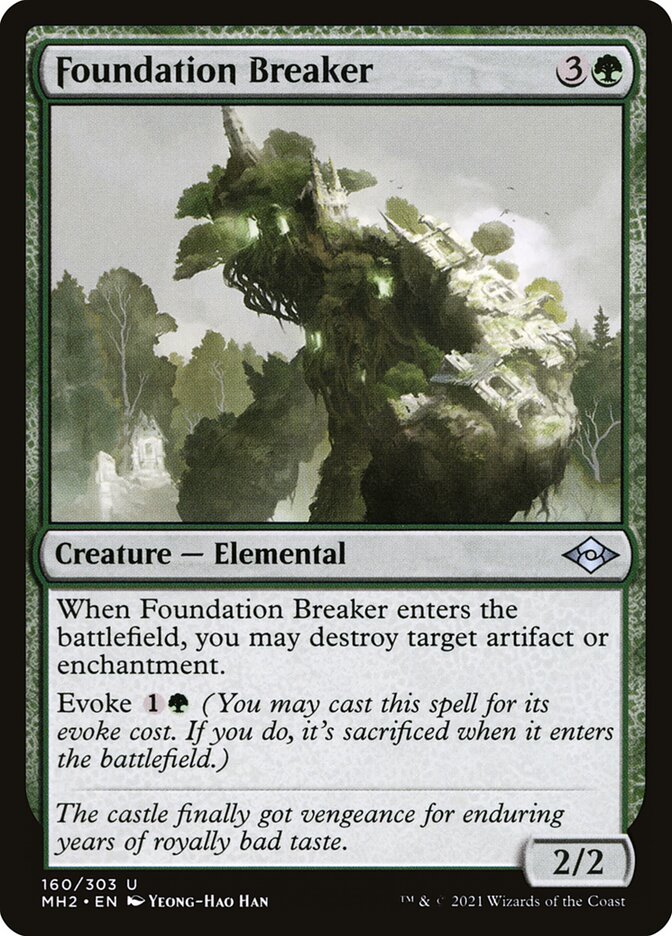
Most anti-graveyard cards are artifacts or enchantments — Relic of Progenitus, Rest in Peace, Nihil Spellbomb — all of which Foundation Breaker can answer cleanly. Once you get the hate card out of the way, you can start filling the graveyard for your normal game plan.
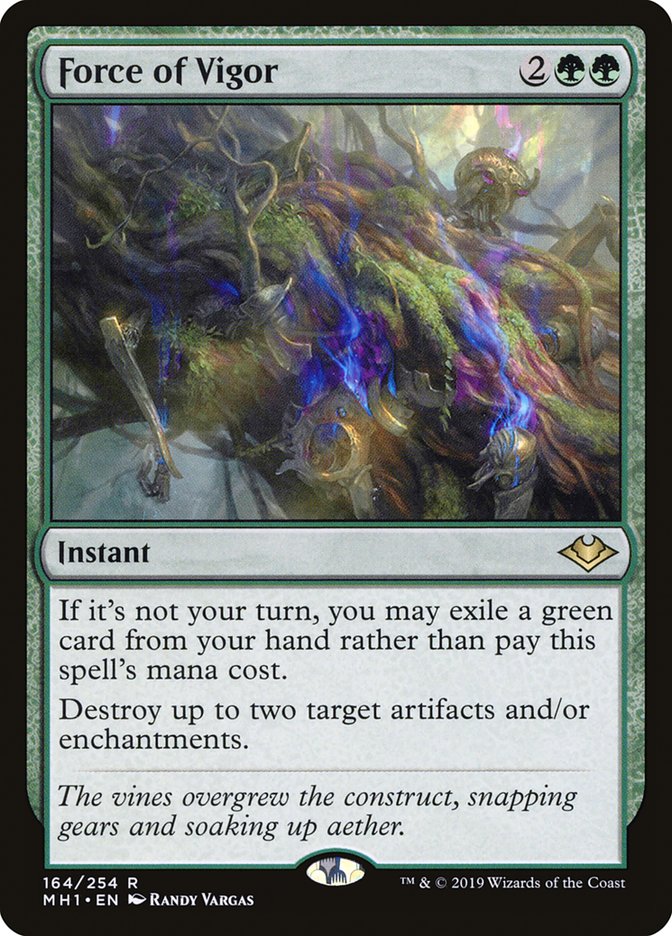
Force of Vigor is filling the role of Foundation Breakers five and six. Instead of a two-mana evoke option, you get to Naturalize two things for the price of two cards. Alternatively, if you draw it late enough into the game, four mana is still a reasonable price to pay to clear out multiple hate pieces.
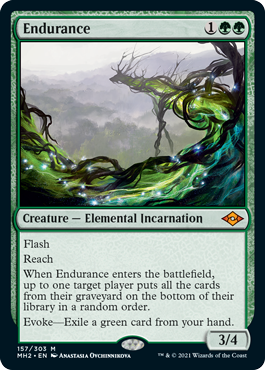
Endurance is integral at beating decks that are good at putting creatures into their own graveyard. The Living End mirror is quite the delicate balance, so being able to exile the opposing graveyard for no mana on the turn you want to combo is huge.
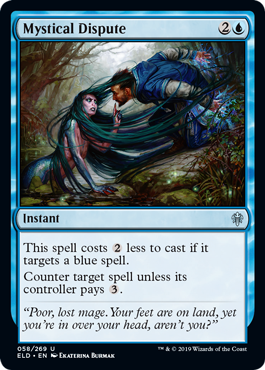
Living End historically struggles against counterspells, so Mystical Dispute gives you an extra couple ways to deal with opposing interaction on the cheap.
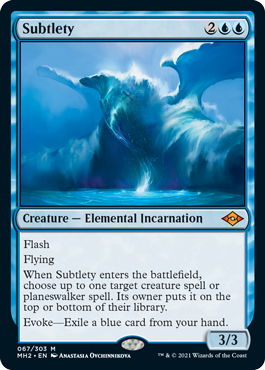
Subtlety cleanly answers creature-based hate cards like Scavenging Ooze, Thalia, Guardian of Thraben and Containment Priest. Importantly, Subtlety also answers Teferi, Time Raveler, which completely shuts off Living End.
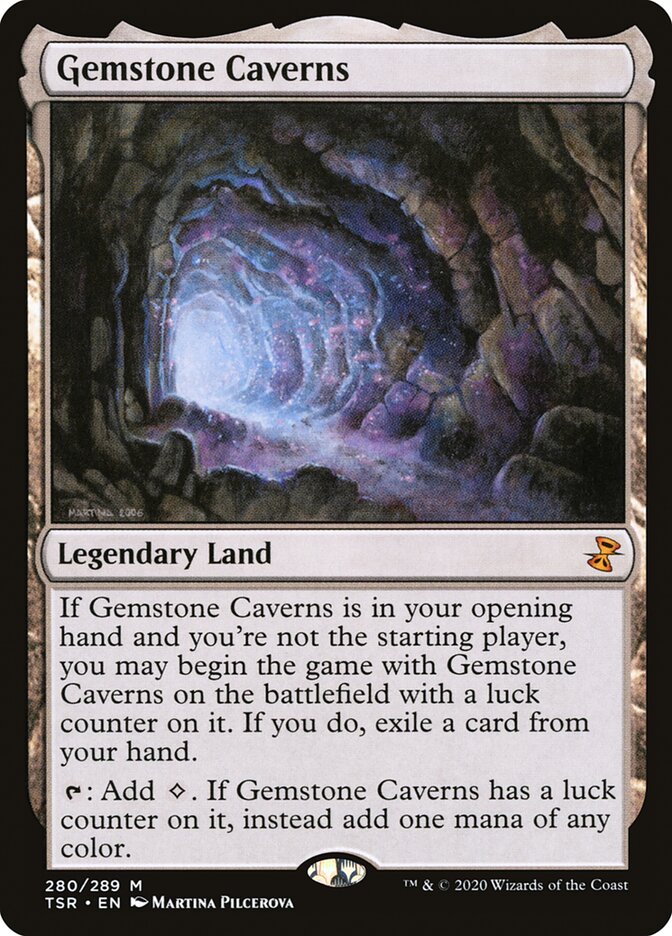
Gemstone Caverns is a card that I only board in on the draw in fast match-ups. Exiling a card from your opening hand is not a small cost, so I reserve it for when I need to be as fast as possible.
Beating the Hate
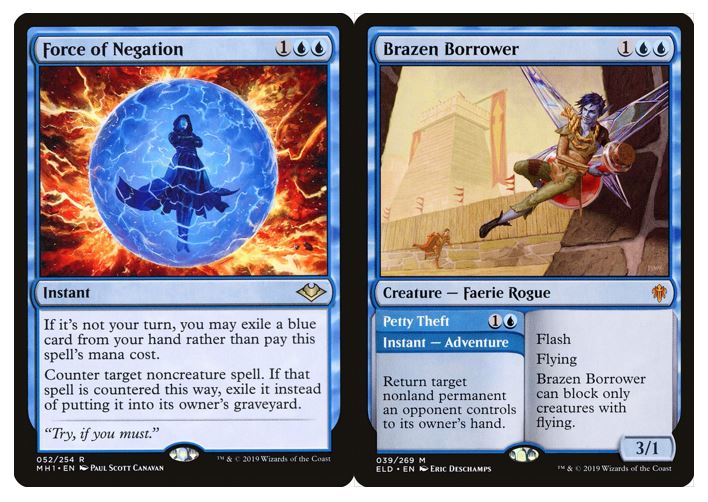
In addition to all of the available sideboard cards, Force of Negation and Brazen Borrower are strong catch-alls. One thing to consider when keeping your hand, especially after sideboarding, is whether you have a plan to beat the specific hate cards your opponent is likely to play.
Good Match-ups
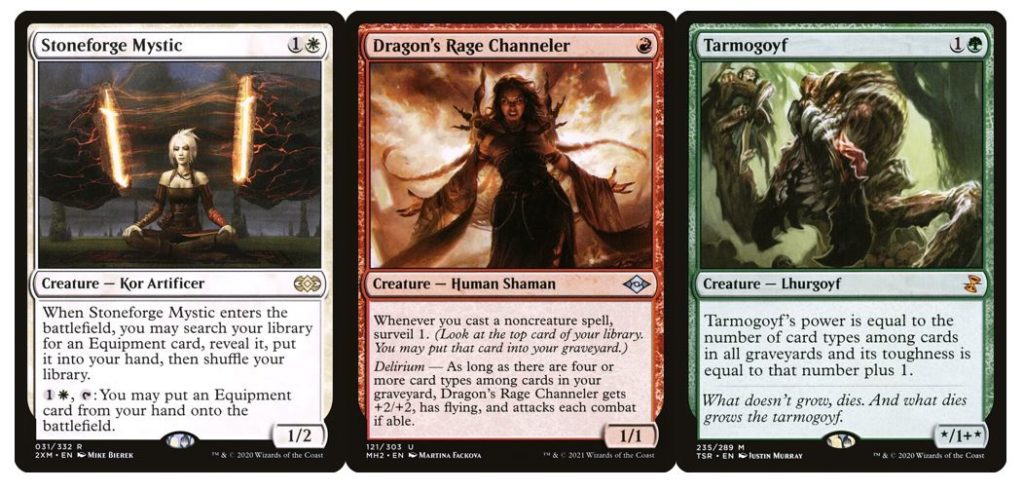
Most creature decks are going to be easy for Living End. The amount of board sweepers in the deck is tough for aggro decks to overcome, especially when they put a bunch of your creatures into play. Eldrazi Tron, Orzhov Stoneblade, Rakdos Midrange, and Jund are all going to struggle because they just can’t handle the sudden influx of power that Living End can produce.
Bad Match-ups
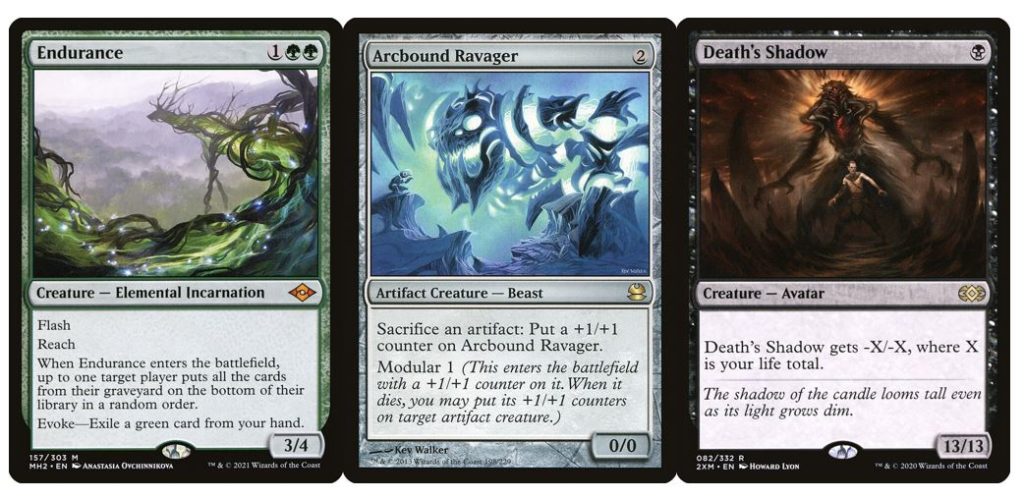
Typical bad match-ups for Living End include decks that excel at putting creatures in their own graveyard, decks with counterspells, and main deck graveyard hate. Elementals plays main deck Endurance, which is a really tricky card to navigate because they don’t need to hold up mana to clear out the graveyard. Hardened Scales has Arcbound Ravager, which can put the entire battlefield into the graveyard at instant speed. Grixis Death’s Shadow can also present a problem — they have a fast clock, plus discard spells and counterspells to prevent Living End from resolving. Hammer Time is also fast enough to produce a kill before Living End can do much of substance.
Tips and Tricks
- You can cast Violent Outburst on your opponent’s turn to be able to defend it with Force of Negation.
- Violent Outburst can just be a pump spell. You can choose not to cast Living End after you cascade into it.
- The best tip of all: If your opponent has a hate piece, and you can’t find an answer to it, you enter the secret mode of Living End: a mediocre Limited deck. Curator of Mysteries and friends have won more games than many people think.
Conclusion
If you like graveyard decks, combo decks, and mediocre draft commons, Living End is a good choice for you. Keeping track of the Modern metagame is important to the success of Living End, because when graveyard hate is low, Living End is at its best. Until next week, keep the Violent Outbursts coming!

Michael Rapp is a Modern specialist who favors Thoughtseize decks. Magic sates his desire for competition and constant improvement.

